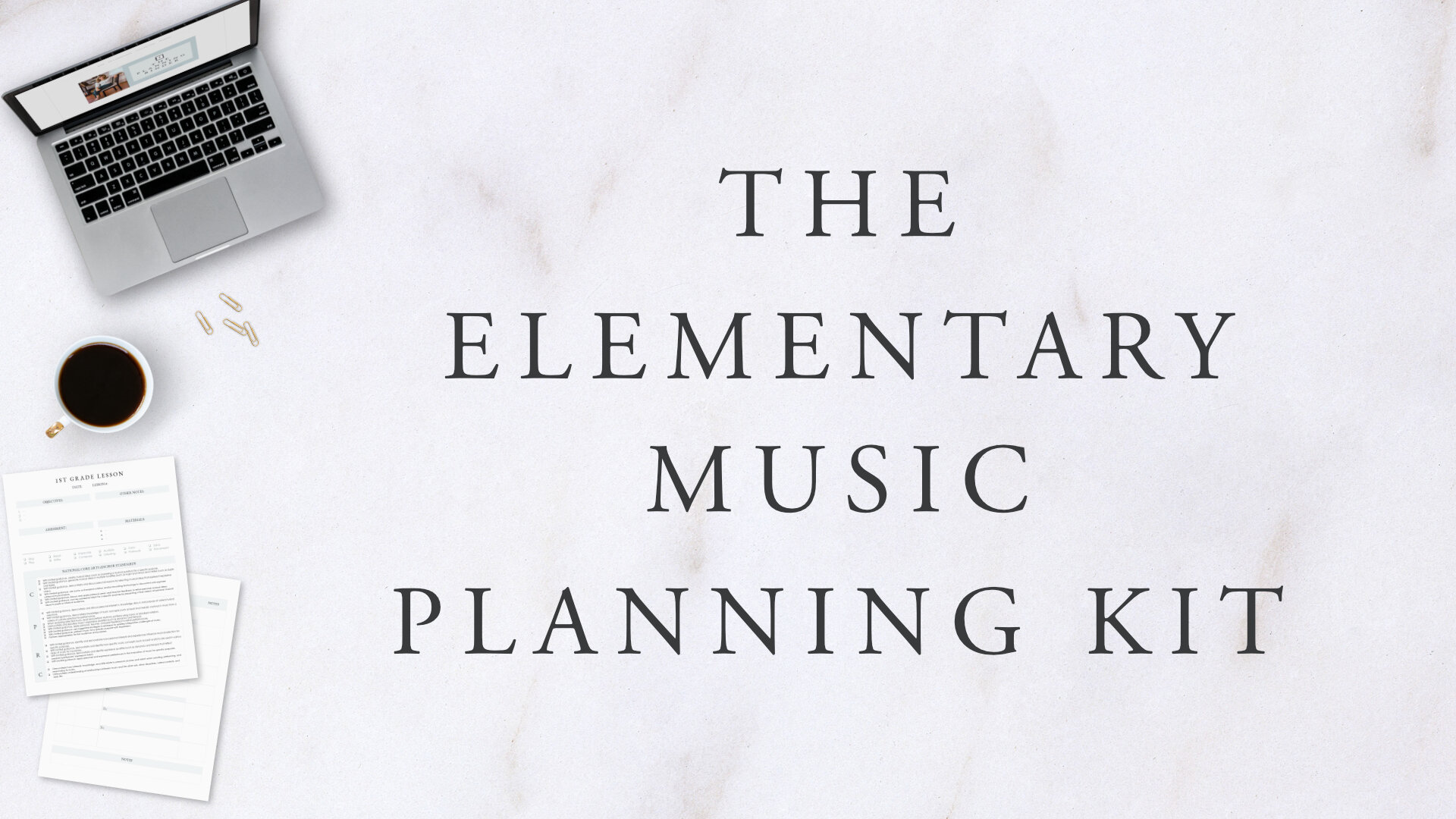Many educators can fall into the trap of waiting for the “perfect” time to start planning for the year ahead.
There’s never a bad time to think carefully and creatively about your goals for your students, and how best to implement them. I would suggest that wherever you are in your year, it is the perfect time to start planning.
This series will build on the material from this post, and continue to break down the planning process so it’s manageable, and meaningful.
Read more about mapping out your ideal music curriculum here.
You can also find examples of long-range plans in The Planning Binder.
Step 1: Curriculum Outline
A curriculum outline (or concept table) is a broad overview of your entire school curriculum, across all grade levels. It’s a big-picture look at where your students have been, and where they’re going.
Writing Your Curriculum Outline: Where to Start
There are plenty of things to consider when putting together a curriculum outline.
How often do you see your students?
How long are your classes?
How long have you been teaching these students?
How in-depth with each concept do you want to go?
The answers to these questions tell you what concepts you can expect to cover at each grade level.
IF YOU'RE MAKING FROM SCRATCH:
If you're making your curriculum outline from scratch instead of purchasing the planning kit, list the elements of music you want to cover along the top of the page. Then list the grades you teach along the lefthand side. In each cell, write the concepts you want to cover in your entire program.
My Curriculum Outline (2018 - 2019)
For reference, here is one example of a curriculum outline. These are very dependent on your particular teaching situation, so here is some context:
I teach TK - 5th grade choir and general music. When students enter 4th grade, they transition from general music to their choice of either choir, band, or orchestra.
I see primary grades (TK - 3rd) on a six day rotation. I see upper grades (4th - 5th grade) twice a week.
I am entering my second full year at my school, and the curriculum reflects that while my upper grades have made progress, there are still concepts that they haven't covered. (You'll notice that the upper grades are working on almost the same concepts.)
Your curriculum outline will change. If you’re like me, at a fairly new school, it might look different every year as your older students progress through your music sequence and are able to move to more advanced concepts.
Read a complete post about creating a curriculum outline here.
With your curriculum outline complete, we can hone in on specific grade levels with perhaps the most important step of planning: repertoire selection.
Song Lists - The Core of Your Curriculum
One of the most practical things I do to prepare for the school year is creating a list of songs that I can use for each grade level.
As music teachers, our repertoire is our curriculum, so the songs we choose are incredibly important. Our repertoire is the core of our students’ experience.
How to Choose Songs for Your Classroom:
“Let us take our children seriously! Everything else follows from this... only the best is good enough for a child.”
The music we choose can certainly be simple and fun, but it’s important to remember that our repertoire selection is the primary tool that shapes students’ musical development. How do we measure the quality of our music selection?
Questions to Guide the Selection Process:
Is the song interesting from a musical standpoint?
Are the lyrics relatable to a child?
Do you like the song?
Does it meet your curriculum goals?
Can you use it in a fresh, creative way in your classroom?
You can read a complete post about choosing repertoire for you music room here.
Creating Your Song Lists:
I use this template for creating my song lists.
Referencing back to your concept table, list out the concepts you want to teach for each grade level across the top of the page. Then brainstorm songs you might use to teach each musical element.
Be sure to consider any special concerts or holidays you’ll want to include throughout the year.
The number of songs you choose is up to you. For younger grades you might choose a fairly large selection since you’ll probably go through lesson materials quickly. It’s likely that you’ll choose fewer songs for upper grades, since their attention span is longer and they can dive deeper into the song material.
IF YOU'RE MAKING FROM SCRATCH:
List all the songs you want to use for that particular grade level along the lefthand side of your paper. Then write out the concepts for that grade level along the top. Mark which songs cover which concepts.
Where to Find Songs:
Here are some of my favorite resources for selecting classroom material:
150 American Folk Songs (especially good for younger grades)
Sail Away: 155 American Folk Songs (great for upper grades)
Folk Songs North America Sings (Again, great for upper grades)
Music Planning Tip:
You don’t need to fill out every single detail at the beginning of the year.
Leave yourself room to be inspired by a book in October, a workshop in February, or a website idea in May. The school year is long, and you’ll think of new things to add to your plans as the year continues.
Curriculum is mapped out, and songs are selected. Next we'll look at creating a scope and sequence, and developing teaching strategies in a concept plan.
Coming Up Next










